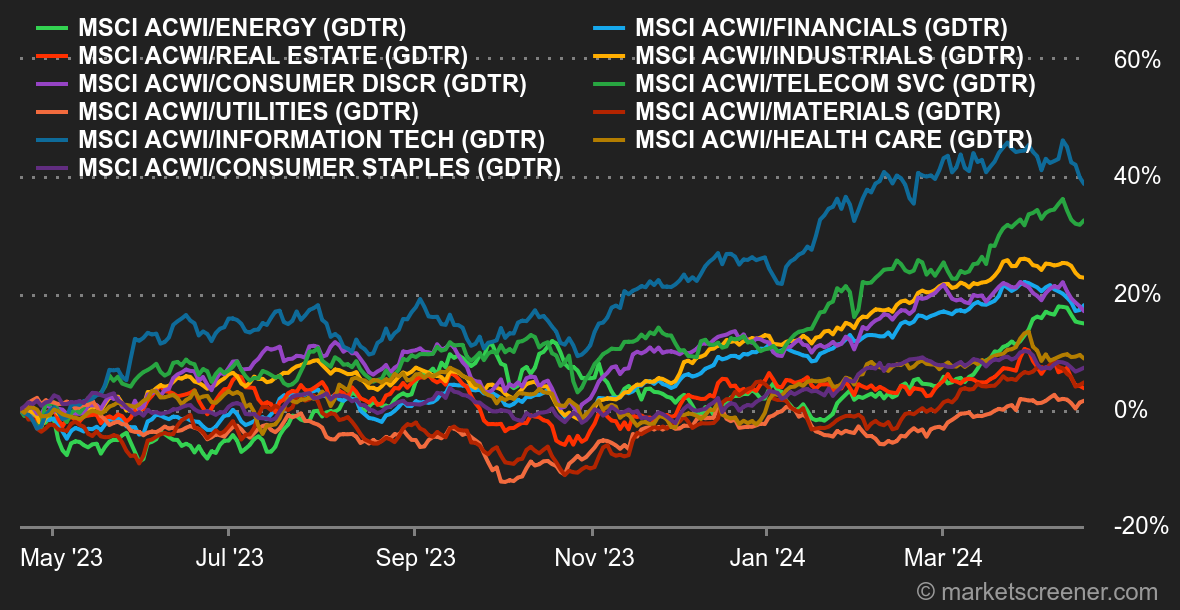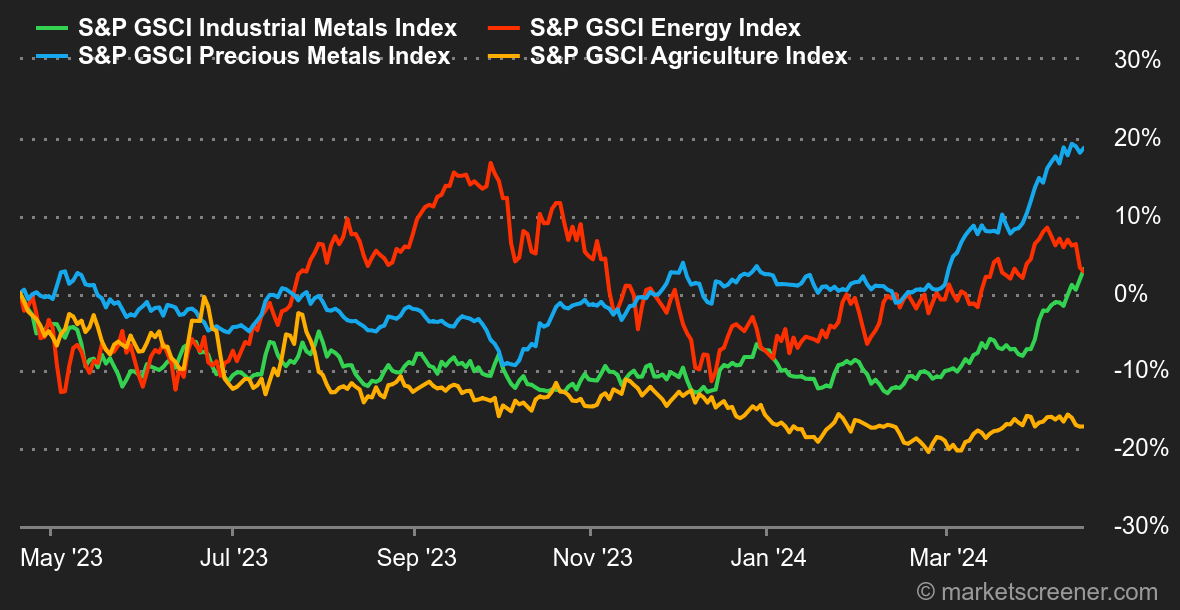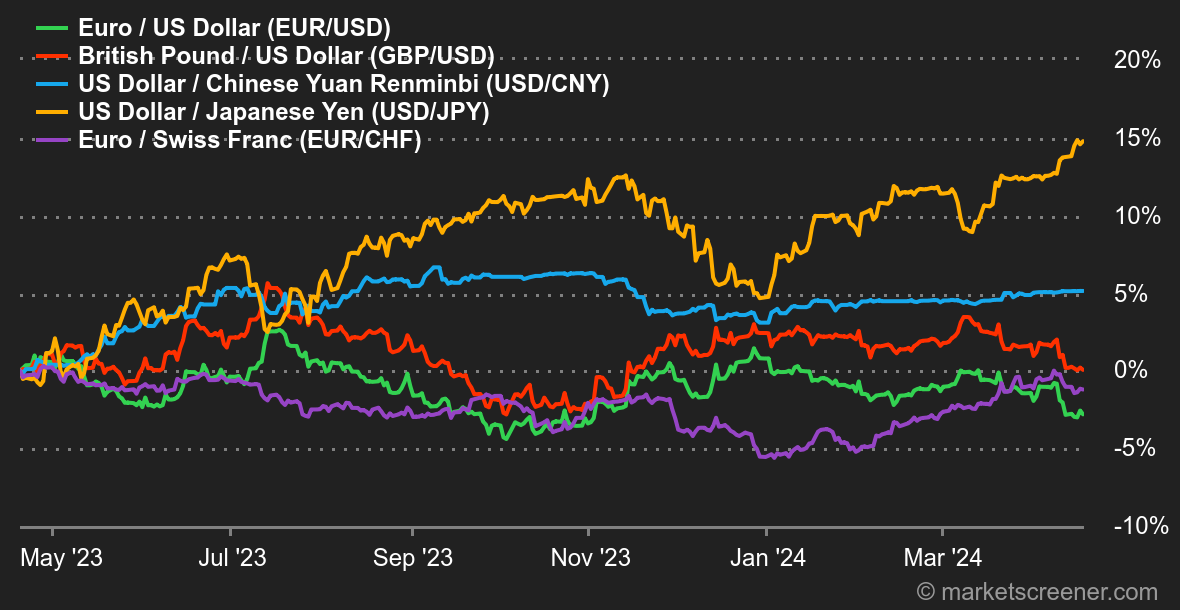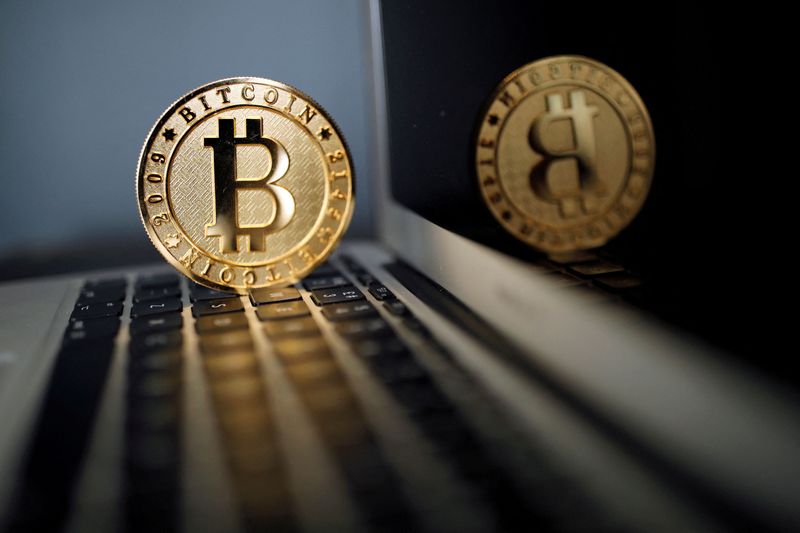Gainers: - United Airlines (+22%), Alaska Air (+10%), American Airlines (+7%), Southwest Airlines (+7%): United Airlines reported solid quarterly results, with sales up 9.6%, above consensus, and a significantly reduced loss, albeit burdened by the grounding of the Boeing 737 MAX 9. The airline also unveiled optimistic earnings forecasts for the second quarter, buoyed by strong demand for summer travel across all customer segments. Alaska Air also reported better-than-expected results, as did its American peers, boosted by the recovery in business travel.
- Hipgnosis Songs Fund Limited (+24%): The troubled music catalog investment company has received several expressions of interest from different parties in recent months. It finally accepted a takeover offer from Concord Chorus. Concord, one of the world's leading independent music companies and indirectly controlled by Alchemy Copyrights, offered $1.4 billion, a 32% premium to Hipgnosis's closing price on Wednesday.
- International Distribution Services (+21%): The British postal and delivery services provider, parent company of Royal Mail and General Logistics Systems, has rejected a £3 billion takeover offer from Czech billionaire Daniel Kretinsky, who already owns 27.5% of IDS via his investment vehicle. Kretinsky announced that he's working on improving his offer.
- UnitedHealth Group (+14%): Despite the sale of its Brazilian business and a recent cyber-attack on one of its subsidiaries, the American health insurance giant is doing well. It posted better-than-expected quarterly results, with revenues up 8.55%. Excluding the financial impact of these disruptions, adjusted EPS rose by over 10%. The Group's forecasts for the year also exceed market expectations.
- Genuine Parts Company (+11%): The automotive and industrial parts specialist reported solid quarterly results. Sales, adjusted earnings and margins were up, underpinned by improved inventory and supply chain management and a cost reduction program. The Group reaffirms its confidence for the rest of the year by raising its profit forecasts, thanks to strong performances in Asia-Pacific and Europe.
- Bentley Systems (+7%): The US company, which specializes in infrastructure engineering software, announced this week that it was considering several sale options, and among the potential buyers, the names of Schneider Electric, a French electrical equipment manufacturer, Cadence Design Systems, the publisher of Cadence Design Systems design software, and Siemens AG, which already holds a stake in the group, have been circulating. On Friday, Schneider confirmed that it had entered into preliminary discussions concerning a takeover of the software activities.
Losers: - Dr Martens (-28%): The British boot manufacturer is still suffering from inflation, which is weakening demand, particularly in the United States and from wholesalers. The group has announced the departure of its CEO and his replacement by the current brand director, and is forecasting a difficult next financial year, still penalized by economic pressures. Since the beginning of 2023, the stock shed over 64%, and over 84% since its IPO in 2021.
- VinFast Auto (-30%): Things aren't getting any better for the US-listed Vietnamese manufacturer of electric vehicles. It has reported an increased loss, and despite a rise in first-quarter sales, is struggling to convince the market that it will achieve its target of delivering 100,000 cars this year. The share price fell by almost 70% since the beginning of 2024.
- Biohaven (-21%): The US biopharma company plunged this week after issuing 5.6 million shares at $41 each to raise $230 million for general corporate purposes.
- Wise (-15%): The British fintech did not disappoint in the last quarter, with revenues up 24% but below estimates, despite a 14% increase in transaction volume. The market also punished the 1% below-consensus annual sales figure, the slowdown in growth in the use of the money transfer app, and a slightly lower-than-expected number of customers. In the wake of this, UBS reduced its target price for the stock.
- ARM (-21%), ASM International (-9%), ASML (-8%): European semiconductor players are struggling. They are being dragged down by poor publications from Taiwanese industry giant TSMC. At the margin, Dutch company ASML reported lower quarterly earnings and a drop in orders, while its sales in China remained stable despite export restrictions. Note that BNP Paribas analyst Exane has downgraded its recommendation on UK-based ARM.
- Tesla (-13%): the former market darling is clearly no longer convincing investors. After announcing this week that it was laying off 10% of its global workforce, the automaker has been forced to recall almost 3,900 Cybertrucks, due to a faulty accelerator pedal that could cause the vehicle to accelerate unintentionally. Analysts are also concerned about the delayed release of the Model 2, and the strategic priority given to the Robotaxi. With a decline of over 40% since the start of the year, the stock is the worst performer on the S&P 500 in 2024.
- Prologis (-13%): The US warehouse specialist reported higher quarterly sales and earnings. But fearing a future drop in activity and occupancy rates, caused by a slowdown in freight demand, it is revising its profit forecasts downwards for the year. Logistics players are suffering from the headwinds sweeping the sector, including reduced consumer spending in a post-pandemic context. We wrote about this in our columns last month. The share price has dropped 22% since the start of the year.
|

 By
By 























